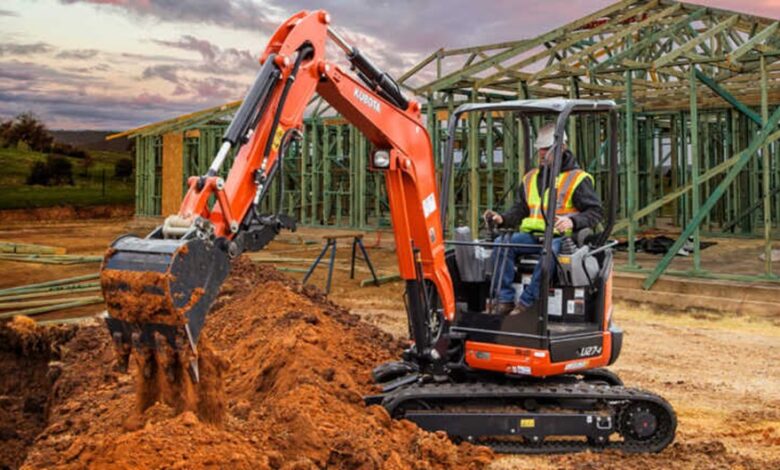Avoiding Common Site Accidents Through Integrated Digger and Crane Supervisor Training

Construction accidents are an unfortunate part of the construction industry. While no one wishes for them to happen, they do occur. There are many reasons behind this. These range from machinery-induced damage to the supervisor’s negligence and so on.
For example, a UK construction firm was put on trial after a pallet with two-tonne bricks fell from a crane. The fall killed an East London woman.
Some other types of machinery-related accidents include crane swing accidents, a failure to lift, and collisions. Apart from supervisor negligence, another factor that causes this accident is a lack of proper training.
Today, we’re going to talk about how you can prevent such accidents caused due to cranes and diggers.
Let’s begin by first talking about the role of digger trainingbelow.
What Role Does Digger Training Play in Site Safety?
Training construction workers helps reduce digger-related accidents like machines tipping over and workers being hit. Training them also prevents trench collapse.
Now, these are mechanical vehicles used by construction industry professionals to excavate topsoil. They use these mechanical vehicles to create swimming pools and lakes and build foundations.
Core Skills Taught During Training
Digger users learn the following vital skills, namely:
Assessing the Construction Sites
This step involves carrying out a detailed and thorough inspection of the required area. During the inspection, they check for underground obstructions, previous construction work, overhead power lines, or ground instability.
By checking these factors, they take the necessary steps to remove them and reduce the possibility of accidents.
Understanding Load Charts and Capacity
Load charts refer to the informational charts that list the maximum weight that diggers can bear. Being taught how to read these charts properly is an important part of digger training.
That’s because a lack of training could lead to professionals loading the digger with more weight than it can handle. This will lead to an accident, such as the boom arm breaking, and the load hitting someone’s head.
Untrained professionals could also extend the boom arm beyond its capacity, which could hit a construction worker.
Stabilising The Digger
In case construction professionals don’t stabilise the digger, it could tip over. This could lead to further issues like weakening the area or unwanted accidents. That’s why digger operators learn how to use outriggers and stabilisers.
These devices stabilise the digger and distribute the weight of the load.
Communicating With On-Ground Staff
Another aspect of digger training is teaching digger operators how to communicate with their on-ground team. The operators are taught hand signals and radio communication protocols.
These communication channels ensure that everyone is aware of each other’s movements and can avoid accidents.
Safely Positioning the Digger
Digger operators also learn where to position the digger correctly. For instance, they keep it away from power lines to avoid snagging. They are also taught where to stand when the digger is being operated by other operators to avoid unwanted accidents.
Hazards Prevented by Digger Operators Due to Training
Properly trained digger operators help prevent hazards like the machine overturning, trench collapses, machine failure, and hitting underground power or gas lines. They also help save human lives.
Compliance Standards Followed by Digger Operators
Digger operators should comply with the NPORS standards. These stand for the National Plant Operators Registration Scheme, and control the eligibility of digger operators to operate them.
You have to pass through the training course and also have a valid CPCS card. The CPCS stands for the Construction Plant Competence Scheme. This card proves that you have all the qualifications for handling construction machinery.
You can also opt for an NPORS or National Plant Operators Registration Scheme Digger training course.
However, the CPCS course is more well known than the NPORS.
Digger operators also follow the official compliance standards, like those of the HSE in the UK.
Just like for diggers, crane supervisors also need to be trained to minimize workplace accidents. Let’s learn more below.
What Role Does Crane Supervisor Training Play in Site Safety?
Training crane supervisors prevents load-bearing accidents, swing based accidents and equipment failure as well.
But what skills or responsibilities do these operators learn or pick up during crane supervisor training, or should they have? Continue reading for more information.
Skills Taught to a Crane Supervisor During Training
A crane supervisor has many responsibilities. These include surveying, lift planning, operation supervision, and ensuring that cranes function perfectly.
Surveying
It refers to the detailed study of the ground prior to starting the operation. During the survey, they study factors like underground utilities, overhead power cables, or trees. After concluding the survey, they take the necessary measures to remove them.
This ensures the crane does not hit power lines or similar obstructions and cause an unfortunate accident.
Lift Planning
Lift planning refers to planning the quantity of weights that are required on a construction site. This ensures that the crane does not operate with a heavier load than its load chart specifications.
By planning the lift quantity, you can avoid unfortunate accidents or issues. For instance, if the crane can lift a 590 kg structure, you won’t load a 593 kg structure on it. That’s because the structure could fall on someone’s head.
Lift planning also involves planning the lifting frequency during work hours. This helps them understand the strain on the machine and adjust work schedules accordingly.
Operation Supervision
Another important factor of crane supervisor training is teaching operators how to survey the operations properly. During this supervision, they check whether other crane operators are communicating with each other or not.
They also check whether the crane or its boom arm, and so on, gets stuck due to an obstruction. Another part of operation supervision involves checking whether everything gets done as per regulations or not.
Crane Maintenance and Repair
Crane operators are also taught about the correct frequency of carrying out maintenance checks on their cranes. These checks help them evaluate the equipment and learn whether it requires any repairs.
In case it does, they call in the required professionals to carry out the repairs. This timely maintenance and repair are in accordance with PUWER and LOLER regulations. It also helps them avoid mishaps due to broken or rusty crane boom arms, and so on.
Accidents Prevented by Crane Supervisors Due to Training
After receiving the necessary crane supervisor training, crane supervisors prevent swing accidents, load drops, and structural strain.
Compliance Standards Followed by Crane Supervisors
Crane supervisors follow the BS7121, CPCS standard, NPORS, LOLER, and PUWER compliance standards in the UK. These stand
The BS 7121 deals with using cranes in an active work environment. It stands for the British Standard Code of Practice for the Safe Use of Cranes and is HSE-recommended.
BS 7121 also mentions how you can comply with the LOLER and PUWER standards.
LOLER stands for the Lifting Operations and Lifting Equipment Regulations 1998. These regulations deal with all manner of lifting equipment.
PUWER stands for the Provision and Use of Working Equipment Regulations 1998. It governs the use of working equipment in general, including cranes.
Additionally, crane operators should have the CPCS course qualifications too.
How Do Accidents Happen When It Comes to Diggers and Cranes?
When both diggers and cranes are used without the relevant knowledge and training, they can lead to disastrous consequences. That’s because digging or excavation and crane teams often work together.
So, when they don’t coordinate, it leads to issues like:
- Cranes lifting near open trenches
- Diggers undermining crane stability.
- Poor communication leading to collisions
- Load drops leading to unwanted accidents
- Accidents with the equipment
- Hitting underground or above-ground gas or pipelines, and electric lines
Choosing a reputed crane and digger training provider can help you avoid all of these accidents.
How to Implement Integrated Training on Your Site?
You can implement integrated training on your construction by referring to the table below:
| Action | What To Do |
| Choose accredited providers | Check whether they have combined NPORS and CPCS modules. Also note whether the modules are compliant with LOLER, HSE, and PUWER. |
| Run joint toolbox talks | Hold discussions and briefings with digger operators and crane supervisors |
| Conduct simulation drills | Use virtual scenarios either verbally or through simulation training software to train digger operators and crane supervisors visually; Helps augment theoretical learnings. |
| Track logs | Keep checking previous accident logs to map improvement in training |
Table 1: How To Carry Out Integrated Digger and Crane Supervisor Training
In Review
Diggers and cranes are both high-risk, especially when used together. So going for an integrated training ensures communication, hazard awareness, and compliance. It also prevents unwanted accidents due to well-trained digger operators and crane supervisors.



